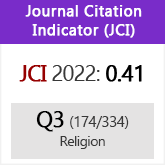Benveniste Nansi de Ragusa’s will and its halakhic iillegitimation by R. Samuel de Medina
DOI:
https://doi.org/10.3989/sefarad.022-008Keywords:
Benveniste Nansi, Ragusa, Will, Samuel de Medina, Thessaloniki, Legal documents, Responsa, Sephardi jurisprudence, HalakhahAbstract
This article deals with the appeal which took place to assess the validity of the will of the Jew Benveniste Nansi, a confessed murderer a co-religionist of the Sephardi community of Ragusa (Dubrovnik), who was sentenced to death and executed by the local Christian authorities. In this unique trial for murder among Jews in that small community, the will had been drawn up in the presence of a gentile scribe and the executioner, a circumstance that could make the will invalid from the point of view of halakhah. The appeal, which was judged by one of the illustrious Sephardi authorities of Thessaloniki, R. Samuel de Medina, demonstrates the application of the Hispano-Jewish method of Talmudic speculation and jurisprudence that he learned in the rabbinical schools of two of the eminent teachers expelled from Spain. It also casts light on his personal reasons for judging the will invalid, due to the negative image he had of both the Republic of Ragusa and its juridical and legal institutions.
Downloads
References
Assis, Yom-Tov y Vesna Miović (2007): «Sefardi Refugees in 16th Century Ragusa (Dubrovnik)», Hispania Judaica Bulletin 5, pp. 248-260.
Benaim, Annette (2012): Sixteenth-Century Judeo-Spanish Testimonies. An Edition of Eighty-Four Testimonies from the Sephardic Responsa in the Ottoman Empire (Leiden-Boston: Brill). https://doi.org/10.1163/9789004210189
de Boton, R. Abraham (1885): Responsa Leḥem Rab (Krakow: Josef Fischer).
Farinelli, Arturo (1925): Marrano (Storia di un vituperio) (Genève: Leo S. Olscki).
Goodblatt, Morris S. (1952): Jewish Life in Turkey in the 16th Century as Reflected in the Legal Writings of Samuel de Medina (New York: The Jewish Theological Seminary of America).
ben Ḥayim, R. Eliyahu (1657): Responsa Mayim ʻamuqim (Venice: Stamparia Vendramina).
Leone di Leoni, Aaron (2011): La Nazione Ebraica Spagnola e Portoghese de Ferrara (1492-1559) (Firenze: Leo S. Olschki).
Lonza, Nella (2004): «Election Procedure in the Republic of Dubrovnik», Dubrovnik Annals 8, pp. 7-41.
Melamed, R. Meír (1799): Responsa Mišpaṭ Ṣedeq de (Salónica: Impr. Brothers Šelomo, Šimeon & Mošé).
ben Mešuŀlam, R. Yeruḥam (1553): Séfer Toledot Adam we-Ḥavá (Venecia: Bragadin) Nativ IV, par. I.
Miović, Vesna (2005): «Beylerbey of Bosnia and Sancakbey of Herzegovina in the Diplomacy of the Dubrovnik Republic», Dubrovnik Annals 9, pp. 37-69.
Miović, Vesna (2005): The Jewish Ghetto in the Dubrovnik Republic (1546-1808) (Zagreb: Academia Scientiarum et Artium Croatica).
Miović, Vesna (2011): «Jewish Life in Sixteenth Century Dubrovnik», Hispania Judaica Bulletin 8, pp. 111-124.
Molho, Michael (1957): «The Rabbi Samuel de Medina» [en hebreo], Sinai 41:1, pp. 36-48.
Moliner, María (2016): Diccionario de uso del español (4ª edición [Edición del Cincuentenario], Madrid: Gredos).
Münster, Ladislao (1971): «Proces zbog "ritualnog ubistva" u Dubrovniku 1502. i tragična smrt lekara Moše Maralija» ["Trial on the ʻritual murderʼ in Dubrovnik in 1502 and the tragical death of the physician Moshe Maralio"], Zbornik Jevresjski Istorijski Musei 1, pp. 99-112.
Orfali, Moisés (2002): «La "ley del reino" y las aljamas hispanohebreas», en El legado de los judíos al Occidente europeo. De los reinos hispánicos a la monarquía española (Pamplona: Gobierno de Navarra, Departamento de Educación y Cultura) pp. 143-152.
Orfali, Moisés (2006): «Aspectos sociales y espirituales de los sefardíes de Ragusa a través de la documentación testamentaria (siglos xvi-xvii)», Sefarad 56:1, pp. 143-182. https://doi.org/10.3989/sefarad.2006.v66.i1.426
Orfali, Moisés (2009): «Ploged na drustevni i duhovni položaj sefardskih Židova u Dubrovniku na temelju zapisa javnih bilježnika (XVI-XVII stoljeće)», Dubrovnik 3, pp. 62-93.
Parker, Geoffrey (2004): Sovereign City. The City-State through History (London: Reaktion Books).
Pastore, Stefania (2015): «From "Marranos" to "Unbelievers": The Spanish Pecadillo in Sixteenth-Century Italy», en Miriam Eliav-Feldon and Tamar Herzig (eds.) Dissimulation and Deceit in Early Modern Europe, (London: Palgrave Macmillan) pp. 79-93. https://doi.org/10.1057/9781137447494_6
Pifano, David (1925): Šalšélet Rabbané Saloniki y Rabbané Sofia (en su obra Ḥagor ha-'Efod [Sofia: Abraham Asa]).
Real Academia Española, Diccionario de la Lengua Española (23ª edición [Edición del Tricentenario], Madrid: Gredos, 2014).
Responsa Morenu ha-Rab Šelomó ha-Cohén (Jerusalem: Zijron Aharon, 2011).
Responsa Morenu ha-Rab Yosef Colón (Venice: Daniel Bomberg, 1519) kelal VII.
Responsa R Moše ben Ḥabib (Jerusalem: Machon Chochmat Shlomo, 2000).
Responsa R. Ašer ben Yeḥiel (Venice: Zanetto Zanetti, 1607-1608).
Responsa R. David ibn Zimrá (Venice: Stamparia Vendramina, Meir da Zara, 1749).
Responsa R. Meír Gabisón (Jerusalem: Machon Yerushalayim, 1986).
Responsa Torat Ḥayim (Salónica: Konpiliash 1713 [ed. Jerusalem: Zichron Aharon Institute, 2003]).
Responsa Yiṣḥaq bar Šéšet, ed. David Metzger (Jerusalem: Majon Yerushalayim, 1993).
Riesco Terrero, Ángel (2003): Vocabulario científico-técnico de Paleografía, Diplomática y Ciencias Afines, (Madrid: Barrero & Azedo).
Rosanes, R. Yehudá (1731): Mišné la-Meleḵ, Hilejot Malvé (Constantinopla: Yoná ben Yaacob).
Sasson, R. Aharon (1626): Responsa Torat Emet (Venice: Gioanne Caleoni).
Tadić, Jorjo (1937): Jevrei u Dubrovniku do polovine XVII stoljeća (Sarajevo: La Benevolencia).
Uziel, Baruj (1927): «Ha-Folklore šel ha-Yehudim ha-Sefaradim», Rešumot 5, pp. 324-337.
Downloads
Published
How to Cite
Issue
Section
License
Copyright (c) 2022 Consejo Superior de Investigaciones Científicas (CSIC)

This work is licensed under a Creative Commons Attribution 4.0 International License.
© CSIC. Manuscripts published in both the printed and online versions of this Journal are the property of Consejo Superior de Investigaciones Científicas, and quoting this source is a requirement for any partial or full reproduction.All contents of this electronic edition, except where otherwise noted, are distributed under a “Creative Commons Attribution 4.0 International” (CC BY 4.0) License. You may read here the basic information and the legal text of the license. The indication of the CC BY 4.0 License must be expressly stated in this way when necessary.
Self-archiving in repositories, personal webpages or similar, of any version other than the published by the Editor, is not allowed.














